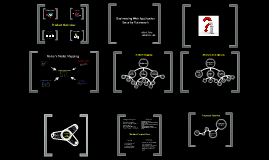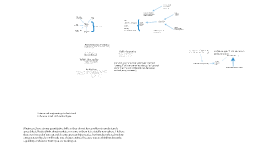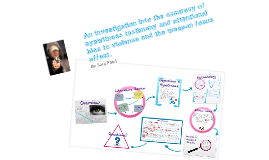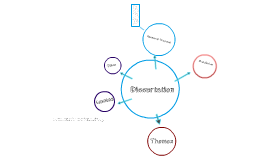Dissertation
Transcript: Quotes Titles Conclusion Dissertation the human ethnographer is the tool used to gather th data, but is not an unbiased perfect tool itself (find who said this -ish_) Research Proposal Themes Research Proposal Although there is no rigid format for the dissertation proposal – we are looking for creativity here, not just an ability to follow instructions – you should include some or all of the following: 1. Research questions: A broad set of questions or problematics to be explored by the dissertation. What is it that you want to find out from the research you are undertaking? (Often this will change as the research progresses – it’s perfectly appropriate to change the focus of your dissertation in response to what your research discovers…). The final dissertation will need to include an argument or a set of arguments that runs through the work. You may not know what that will be at that stage, but it’s good to pinpoint the themes you want to explore. 1. Placing the research theoretically and thematically: Give an indication of where your study sits within the broader literature on the topic. For example, is it medical anthropology? A contribution to the ethnography of Southern Africa? Or might it be related to a particular body of thematic literature – such as the anthropology of the body, or wider studies of a particular group in the diaspora? You might also want to indicate where the study is coming from theoretically: are there any theorists who have influenced your choice of topic? The aim here is to show an awareness of what’s already out there on the topic you’ve chosen, and to show how your work might fit into it. What, for example, is unique about it in relation to the other work (you might, say, be exploring a question that’s been asked before, but in relation to a different group of people). c) Your research site(s): Tell us something about the (proposed) research site or sites: where will you do the research (eg in a particular village in Mozambique or a gym in North London?)? Who will be your main informants (children? women? a particular sub-group?) d) Research methods: this shouldn’t be a dry, academic account of different methodological approaches, or the finer points of grounded theory versus some other approach, with lots of references from the methodological literature. Reflect on how you will actually carry out the research, thinking, for example, about whether you want to include interviews and questionnaires (and, if so, what kind of interviews and questionnaires, and why), or whether you will rely primarily on participant observation. e) One hard copy of your proposal should be submitted with a submission form to the Social Sciences essay box by 3 pm on Friday 14 October 2011. (You are advised to keep a copy for your records.)

















